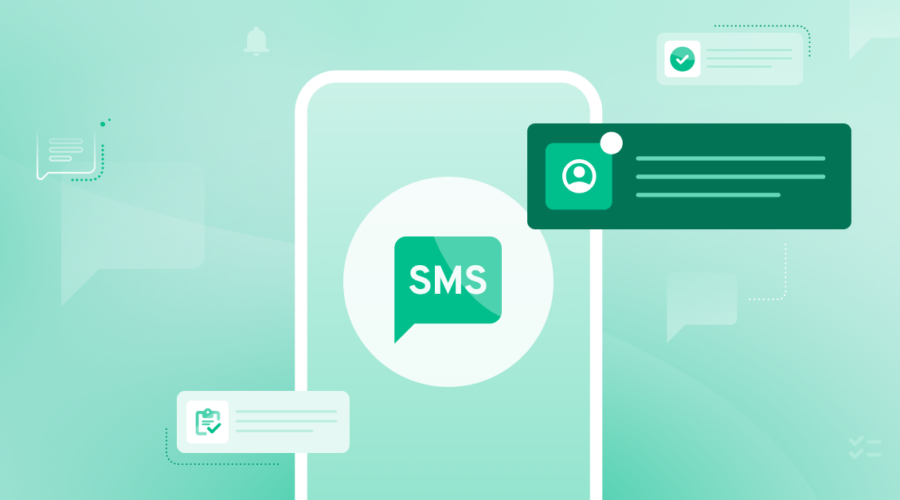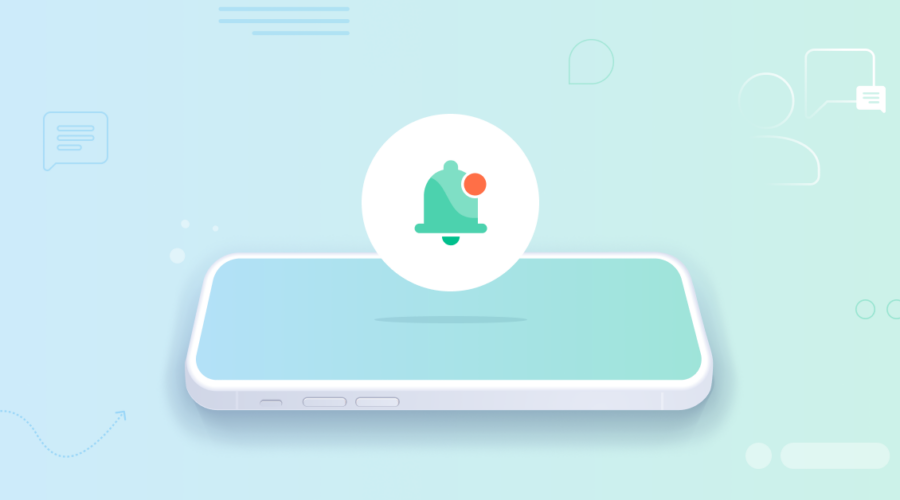We’ve all become a generation of texters. Unsurprisingly, businesses have gotten fully on board. Businesses use SMS, MMS, RCS, and even over-the-top applications to connect with customers on their terms.
SMS vs. MMS: An overview
The main difference between SMS and MMS? MMS supports multimedia content, whereas SMS only supports sending plain text (and sometimes emojis). With both SMS and MMS used daily by just about everyone, it’s essential to know each type of messaging, their strengths, and their differences.
Using the right messaging service can help you deliver personalized customer engagements for your business, and boost your bottom line. But we’ll get more into that—first, let’s review what SMS and MMS are.
What’s the difference between MMS vs. SMS messaging?
SMS has more limitations around content format and character limit, but it’s compatible with all devices and numbers, and doesn’t require internet.
MMS, on the other hand, can share a wider range of content at up to 1,600 characters, but requires internet connection.
| SMS | MMS | |
|---|---|---|
| Content format | Text | Text, Gifs, Images, Video, Audio |
| Character limit | 160 | 1,600 |
| Compatability | All devices and number types | 10DLC, Short codes, Toll-free |
| Internet connection | Not needed | Needed |
| Price | $ | $$ |
| Use cases | Appointment reminders Order updates Shipping information Account updates Loyalty programs | Product releases Promotions and discounts Abandoned carts Brand awareness Service confirmations |
What is SMS?
SMS (Short Message Service) messaging is known as “plain text messaging”. It’s the most commonly used form of texting and, best of all, you don’t need mobile data or WiFi to send or receive them.
You can also send and receive SMS on any number and device, giving you a lot of coverage for message deliverability. But—an important distinction—you can’t share pictures or recordings with SMS. Only emojis! 😁
The benefits of SMS
- High deliverability. Not only do all mobile devices receive SMS, but it can also work in areas with limited data and poor signals. With fewer deliverability barriers, you can easily send bulk messages and reach a broader audience.
- Cost-effective. SMS is less expensive than MMS, and an effective communications channel when your business needs shorter messages—things like important notifications, appointment reminders, or shipping updates.
- Drive click-throughs via hyperlinks. While SMS does not include multimedia, it does allow sending of URLs to your customers. Even if you’re using SMS, you still have a way to send brief, information-rich messages to your audience. But proceed with caution! It’s important that you use the right text message linking practices, otherwise, your messages could get blocked.
The downsides of SMS
- Content limitations. You can’t send video, photos, emojis, or gifs in a traditional SMS message.
- Character length. SMS messages cap your length at 160 characters.
What is MMS?
MMS (Multimedia Messaging Service) is “rich media texting.” It allows you to be more creative with the content you send. As the name implies, you can send multimedia formats like video, audio, GIFs, and images.
Specific file formats supported by MMS include: GIF, PNG, JPG/JPEG, MP3, MP4, and animated GIFs.
MMS messages can also be much longer than SMS (1,600 characters, to be exact!). However, there are more limitations around deliverability, as MMS requires an internet connection to send messages.
The benefits of MMS
- Larger content capacity. MMS messages have a large content capacity. Its high character limit makes long messages more cost-effective than sending SMS over multiple 160-character segments. (Sending one long message is cheaper than sending 4 short messages).
- Better user experience. After all, a picture is worth a thousand words, and if you turn up the volume, the video definitely does. When a customer is waiting on their order delivery, a quick look at an MMS image sent by the company confirms it’s on their doorstep. If you want to introduce an eye-catching product or bring a reassuring face along with your text messages, MMS will convey your brand’s personality better than SMS.
- Claim customer attention. We respond to images in an incredibly fast time, taking as little as 13 milliseconds to process them. Given our short, scrolling attention spans, MMS can help your business stand out in a crowd of text-only notifications. MMS works because visuals catch our attention, especially when they move (i.e., GIFs and videos).
The downsides of MMS
- Higher per-message costs. While MMS messages cost more than SMS, it’s often cheaper to send one longer MMS text than multiple SMS texts. However, MMS marketing campaigns can also deliver a higher ROI, with more engagement than traditional SMS messages.
- Less accessible. Not all contacts can actually receive MMS messages. Smartphone usage & MMS-enabled plans can impact MMS deliverability.
What’s Over-The-Top Messaging?
But wait, what’s the deal with Over The Top (OTT) messaging applications? There’s this happy medium between SMS and MMS, and there’s a good chance you’ve used them (think Facebook Messenger, iMessage, Wechat, Whatsapp).
OTT is a fancy phrase for any message sent over the internet. Instead of relying on a carrier network for message deliverability, having stable Wifi (and an app) allows you to do all the same texting capabilities that cellular data has in the app platform.
OTT vs. SMS vs. MMS
Are there significant differences between the major OTT messaging apps? Let’s take a look!
- iMessage: Offers SMS inbox integration, is not compatible with Android, ad-free, no personalization, compatible with iOS, free on Apple devices.
- Facebook Messenger: Supports widgets, integrates with social networks, 111 Languages supported, not ad-free, compatible with iOS and Android, free.
- WeChat: Offers “two-way opt-in” to prevent unwanted messages, built-in translator, not ad-free, compatible with iOS and Android, free.
- WhatsApp: Offers privacy options, temporary images, and texts that will delete over a specified time, specify availability, ad-free, compatible with iOS and Android, free.
What’s right for you: SMS or MMS?
You’ve done your homework. You can confidently answer “What is SMS?” and “What is MMS?.” Now, it’s time to decide what’s truly right for your business needs.
Start by understanding who your recipients are, what they’re more likely to engage with, and what your use cases are. SMS might work great for patient appointment reminders and oil change check-ins. If you’re trying to capture attention and drive conversions via marketing campaigns, MMS might be the better choice for your goals.
Get started with SMS, MMS, or a blend of both
If you’re engaging your audience through texts, you’ve got two solid options in front of you. For more insight on how SMS and MMS can impact your comms strategy, you know where to find us.👇




